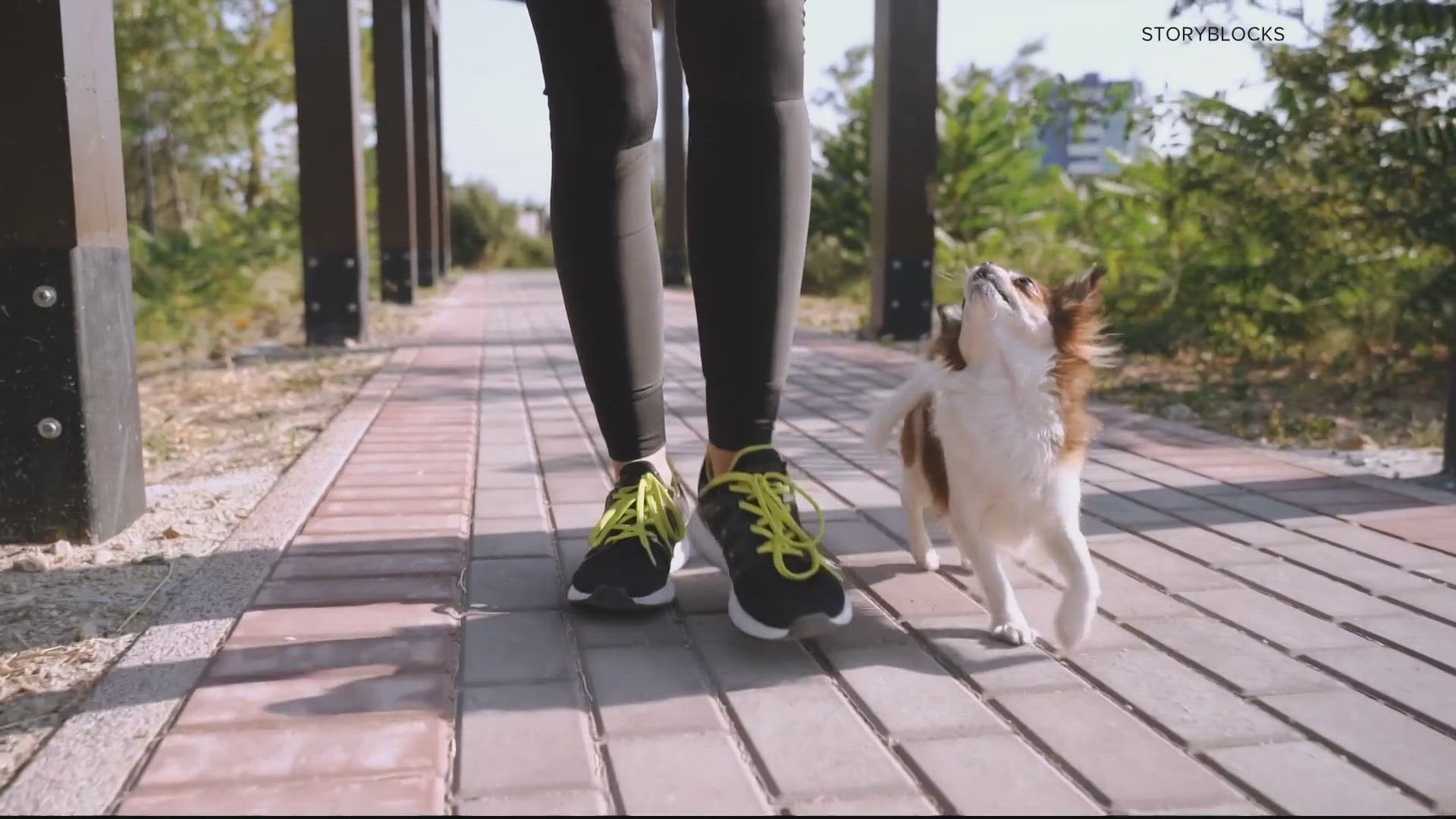WASHINGTON — It’s fun to bring our pets with us to get involved in some summer fun, but our furry friends are at much higher risk of heat-related illness on these hot days.
The ASPCA lists signs of heatstroke in pets, including:
- Excessive panting or difficulty breathing
- Increased heart and respiratory rate
- Drooling
- Mild weakness
- Stupor
- Collapse
THE QUESTION:
What can you do — and what should you avoid — if you’re looking to keep your pup cool?
THE SOURCES:
Dr. Sage De Rosa, D.V.M., Assistant Professor of Clinical Emergency & Critical Care, University of Pennsylvania School of Veterinary Medicine
Dr. Audrey Weaver, D.V.M., Partner Doctor at Heart + Paw
The American Society for the Prevention of Cruelty to Animals
WHAT WE FOUND:
No, it’s not safe to leave your dog in the car in the heat — even in the shade, or with windows cracked.
“The most common thing that we see causing heat related illness and heat stroke is pets that are left in cars,” said Dr. Sage De Rosa, assistant professor at University of Pennsylvania School of Veterinary Medicine.
The ASPCA warns that young, old, overweight, thick-coated and flat-faced pets are most at risk for overheating, especially when the weather is above 65 degrees or so.
“That temperature is going to raise pretty substantially and over time can get well above 100 degrees,” said Dr. De Rosa.
Yes, grooming habits should be adjusted for the summer. Brush out excess fluff and trim extra length that could be packing in the heat — and to help manage shedding around the house. But our experts say a full summer shave could lead to sunburn, even overheating.
“Their coat is in general meant to be adaptive for the season," said Dr. De Rosa. "And so that's why they shed. When we start to kind of take control of that and shave it really short, it can have the opposite effect. It can take away those adaptive mechanisms."
Sometimes matting and ungroomed coats, coupled with heat and sun, can cause skin conditions. Dr. Audrey Weaver, partner veterinarian at Heart + Paw, says different pets may have different grooming requirements to deal with the heat.
“There's a lot of variations and there's some great groomers out there that can really, help consult and get an idea of what the right length is for that pet,” said Dr. Weaver.
Yes, the pavement can get too hot for pets' paws.
“I think if you are questioning it, put your hand down and hold your hand down there and see if it's comfortable for you," said Dr. De Rosa. "If it doesn't feel comfortable for you, it's not comfortable for them.”
Avoid blacktop, opting for cooler sidewalks and soft grass when possible. Once can also help keep them feeling–and looking–cool.
“They do have this rough keratin surface on the bottom of the paw, but it is not impenetrable,” said Dr. Weaver. “So it can it can peel, it can crack, it can it can have slices, it can burn, you know, just like we can get, you know, peeling and stuff on our skin from the heat and burns, they get the same thing.
No, don’t feel guilty if your pup isn’t getting as much outside time on the hottest days.
“I think the majority of people are great pet owners and care about their pets very much. And so they want to get them outside, they want them to have fun, they take them to dog parks and they play fetch," said Dr. De Rosa. "If that happens and it's fairly hot out, they can overheat pretty quickly and get heatstroke."
Keep them busy with indoor exercise and enrichment activities, and consult your veterinarian if you are concerned your pet isn't getting enough stimulation.
“We have to get creative and don't push them,” said Dr. Weaver. “If it's like if you can't handle it, they definitely can't."
Bring plenty of water for any outdoor activities. If you are planning a day outdoors, pack them their own water bottle, and take plenty of breaks.
Sign up for the Get Up DC newsletter: Your forecast. Your commute. Your news.
Sign up for the Capitol Breach email newsletter, delivering the latest breaking news and a roundup of the investigation into the Capitol Riots on January 6, 2021.

